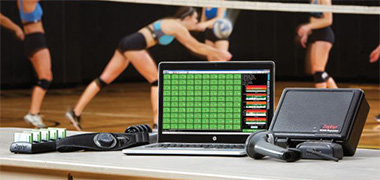Through wearable monitoring, Zephyr™ Performance Systems provide documentation by measuring six key inputs that report on nearly two dozen biometrics. With these inputs, researchers can make the necessary adjustments to their studies to help improve effectiveness and reduce unwanted side effects — and start helping people.
View BrochureArticles and Research
Study of the Seasonal Demands of Women’s Collegiate Soccer
Researchers have filled a big data gap with this first study to measure the seasonal demands of women’s collegiate soccer. Armed with this data, college coaches can tailor their training programs and strategies to their student athletes.
Read MoreBioHarness™ Multivariable Monitoring Device: part I, Validation Study
Progress with new monitoring technology has assisted with the improvement of the collection of physiologically related data across a wide variety of free living situations. From everyday physical activity scenarios through to sporting performance.
Read ArticleBioHarness™ Multivariable Monitoring Device: part II, Validation Study
See the results that suggest the BioHarness module is a reliable multivariable monitoring device during laboratory testing.
Read ArticlePhysicians Thoughts on Wearable Technology
A chief of cardiovascular medicine has a lot to say about the benefits of wearable technology. She appears on CNN for a show-and-tell, which includes Dr. Sanjay Gupta, CNN’s chief medical correspondent. Want to guess what he’s wearing? A Zephyr™ sensor.
Read ArticleCardiovascular Response to High Altitude
Believe it or not, there isn’t a lot of information about the effects of high altitude on lowlanders. So a group of researchers conducted a study using heart rate variability data captured by Zephyr™ monitoring tools. Review the findings.
Read ArticleRespiratory Response Validation Study
Reliability and validity of the Zephyr™ system BioHarness™ to measure respiratory responses to exercise.
Read ArticleEstimated Core Temperature Validation Study
This study compares estimated core body temperature, determined by heart rate data from a wearable chest strap physiology monitor, to standard rectal thermometry under different conditions.
Read ArticleHeart Rate Validation Study
Validation of heart rate derived from a physiological status monitor-embedded compression shirt against criterion ECG.
Read Article


